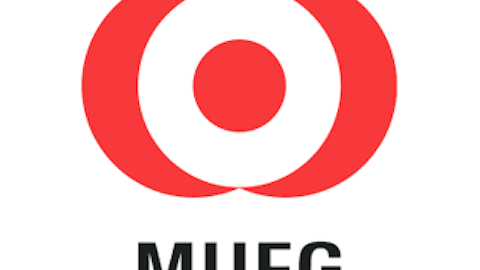Citi’s DTAs have grown to $55 billion from $38 billion in 2009 and $50 billion in 2010.
It is widely viewed that it’s time for Citigroup to begin recording a valuation allowance instead of DTAs. A valuation allowance is recorded when the bank believes there less than a 50% likelihood that it will make use of the tax benefits. If the probability improves later on, the bank can always covert the valuation allowances back into DTAs.
It is further believed Citigroup will soon be forced by regulators to reduce its DTAs. Investors bullish on Citigroup will be more than happy if the bank makes use of its DTAs by posting sufficient earnings before the assets expire.
I believe that Citigroup’s recent deal with Best Buy is one way to accomplish this. Another way Citigroup could make use of its DTAs quickly is by accelerating profits through the acquisition of companies with stable streams of taxable income going forward.
Other positive drivers
According to Reuters, Citigroup has started considering cutting its cash on hand by about $35 billion. This move will bring about a 2% boost in the bank’s profits of the current year. According to the regulatory standards, Citigroup has more than sufficient liquidity.
It currently has liquid assets to cover around 37 days of cash drain, which will drop to 33 days if the bank gets rid of excess cash holdings. This will still be 10% above the Basel III regulatory requirement. Compared to this, JPMorgan has liquidity below the pending regulatory minimum requirement.
JPMorgan was once considered to be the safest bank of the nation. However, I believe it has become the new bad bank of the nation thanks to the London Whale incident and other weaknesses in the bank’s internal controls, which have been exposed.
I believe Citigroup has taken over as the new safest bank. The results of the latest stress test also support the thesis. Citigroup’s stressed Tier 1 common capital ratio came in the highest among the money center banks.
Recent outperformance
Citigroup’s recent performance in comparison to its peers has been outstanding. As of fourth quarter, Citigroup reported 1.9% non-performing loans to total loans, compared to 3.5% for Bank of America Corp (NYSE:BAC) and 3.1% for Wells Fargo & Co (NYSE:WFC).
Citi’s profitability, as measured by net interest margins is also impressive . The bank earned a net interest margin of 3.7%, compared to 3.2% for Bank of America and 2.6% for JPMorgan during the fourth quarter of 2012.
Citigroup’s financial strength as measured by its capital ratios also exceeds its peers. The bank has Tier 1 Common Ratio of 12.7% and Tier 1 Common Capital Ratio of 14.1%. In comparison, Bank of America has Tier 1 Common Capital Ratio of approximately 11.1% at the end of the most recent quarter.
Relative valuations
Citigroup has appreciated 8% since the beginning of the year, and I have a target price of $49 for it. This represents an upside of 10.2% for the stock that is currently trading at a 28% discount to its book value.
Compared to this, JPMorgan is trading at a 7% discount to its book value, while Wells Fargo & Co (NYSE:WFC) is trading at 34% premium to its book value. Therefore, Citigroup is attractively valued compared to its peers.
Conclusion
I’m bullish on Citigroup for its cheap valuation, continued superior performance and strong financial strength combined with a solid capital base. Therefore, I recommend investors buy the stock and benefit from the expected upside.
The article This Banking Giant is Undervalued originally appeared on Fool.com and is written by Adnan Khan.
Copyright © 1995 – 2013 The Motley Fool, LLC. All rights reserved. The Motley Fool has a disclosure policy.

